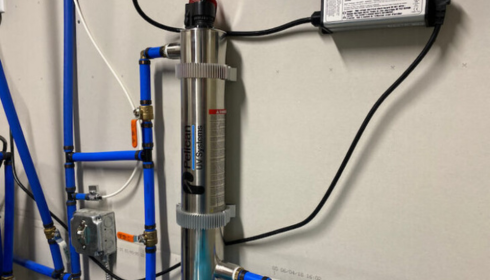There’s something oddly comforting about hearing the steady hum of a well-maintained water system — a sound that quietly says everything’s working as it should. But what most of us rarely think about is just how much technology and planning goes into making that happen. From large municipal projects to the pipes under your kitchen sink, water treatment has become one of the most essential (and underrated) pieces of infrastructure in modern life. And lately, it’s been evolving fast.
Let’s talk about that shift — the growing importance of smart installations, cleaner technologies, and the simple truth that clean water isn’t just about convenience anymore. It’s about sustainability, safety, and responsibility.
When Communities Upgrade: Building Better Treatment Plants
Imagine an entire town depending on outdated systems to manage wastewater — it’s a ticking environmental time bomb. That’s where wastewater treatment plant installation projects step in. These facilities are the unsung heroes that make sure harmful substances don’t end up in our rivers, lakes, or groundwater.
Installing or upgrading such a plant isn’t just about meeting government regulations; it’s about future-proofing communities. Engineers now design systems that recycle water for irrigation, cooling, or even industrial reuse. Advanced sensors track contaminants in real time, allowing quicker reactions when something goes wrong.
More importantly, the shift toward renewable energy-powered treatment plants is accelerating. Solar panels, biogas digesters, and automation are making them more self-sustaining and less dependent on fossil fuels. It’s the kind of progress that quietly transforms cities, one efficient pump at a time.
UV Light: The Invisible Defender in Modern Water Systems
At the residential and commercial level, water safety takes another interesting turn — ultraviolet disinfection. It sounds futuristic, but the concept is simple and elegant. A uv disinfection system installation uses UV-C light to kill bacteria, viruses, and microorganisms without adding any chemicals to the water.
No chlorine smell. No aftertaste. No harmful byproducts.
These systems have become increasingly popular in hospitals, schools, and even high-end homes that want to ensure every drop is crystal clear. Plus, they’re eco-friendly and energy-efficient. The key is proper installation — positioning, flow rate calibration, and regular maintenance all make or break performance.
In a world still battling waterborne diseases, UV disinfection offers peace of mind in a sleek, scientific package. It’s not just cleaner water; it’s smarter protection.
Home Is Where Clean Water Flows
If there’s one place where water quality hits closest to home, it’s — well, your home. Most homeowners today are far more conscious about what’s flowing from their taps. That’s where whole house water purification installation comes into play.
Unlike point-of-use filters that only clean water at one faucet, a whole-house system ensures that every tap — from your bathroom sink to your shower and washing machine — delivers purified water. It removes sediments, chlorine, heavy metals, and even microplastics that can harm both your health and your plumbing.
The result? Softer clothes, cleaner dishes, healthier skin, and better-tasting coffee (yes, really). It’s the kind of upgrade that quietly improves daily life without you realizing just how much of a difference it makes — until you visit a home that doesn’t have it.
The Hidden Benefits Nobody Talks About
Here’s the thing — people often think water treatment is just about removing bad stuff. But it’s also about what happens after. Cleaner water systems extend the lifespan of your appliances, reduce scale buildup in pipes, and even lower energy bills. When water heaters don’t have to fight mineral deposits, they run smoother and last longer.
For communities, better systems mean fewer pollution penalties, lower maintenance costs, and improved public trust. And for homeowners, it’s one of those rare investments that feels both practical and personal. You see and feel the results every day — in how your skin feels after a shower or how your clothes smell out of the washer.
Technology Meets Responsibility
What makes today’s water systems so remarkable isn’t just the tech — it’s the mindset behind them. More cities and homeowners are choosing solutions that align with environmental responsibility. Whether it’s using less chlorine, generating energy from organic waste, or monitoring efficiency through smart apps, the goal remains the same: use water wisely and give back what we take.
Companies in this space are also adapting, offering customized systems that match local needs — from rural areas battling hard water to urban districts dealing with industrial runoff. The line between large-scale infrastructure and home improvement is blurring fast. It’s all part of a broader movement toward conscious water management.
Why It All Matters
We tend to take clean water for granted — until something goes wrong. A boil-water notice, a strange taste, or a murky glass can suddenly make you realize how fragile our systems really are. But it doesn’t have to be that way. With the right installations and maintenance, clean water can be a given, not a gamble.
And while it’s easy to ignore what happens beyond the faucet, these systems — from treatment plants to UV sterilizers — represent something deeply human: our desire to live well without harming the world around us.
So whether you’re part of a city council approving a new treatment plant, a contractor fitting a UV system, or a homeowner upgrading your filtration setup, remember — it’s not just water. It’s life, convenience, and care flowing through your pipes.
Because at the end of the day, clean water isn’t a luxury. It’s a reflection of how seriously we take our responsibility — to ourselves, our communities, and the planet that sustains us.

